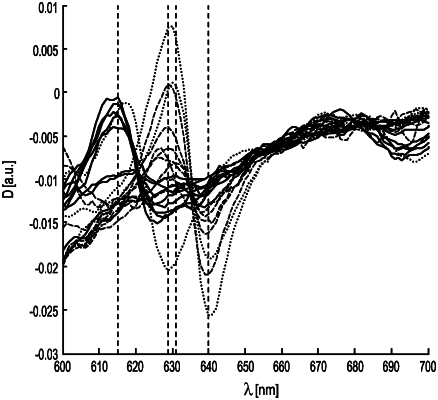| CPC A61B 5/0071 (2013.01) [A61B 18/1492 (2013.01); A61B 2018/00577 (2013.01); A61B 2018/00642 (2013.01)] | 13 Claims |

|
1. A detection system for detecting a state of tissue, comprising:
an excitation light source configured to generate excitation light for exciting the tissue;
at least one fiber configured to guide the excitation light from the excitation light source to the tissue;
an emission light detector configured to generate a fluorescence spectrum from emission light emitted by the tissue in response to excitation by the excitation light; and
at least one processor configured to:
define a first tissue state related to a first wavelength within a first wavelength range and a second tissue state related to a second wavelength in a second wavelength range,
generate a derivative of the fluorescence spectrum,
determine a first measure based on at least one of i) a first difference between a) the derivative at a wavelength which is smaller than the first wavelength and within the first wavelength range and b) the derivative at a wavelength which is larger than the first wavelength and within the first wavelength range, and ii) a second difference between a) the derivative at a wavelength which is smaller than the second wavelength and within the second wavelength range and b) the derivative at a wavelength which is larger than the second wavelength and within the second wavelength range, and
determine whether the tissue is in the first tissue state or the second tissue state based on the determined first measure.
|